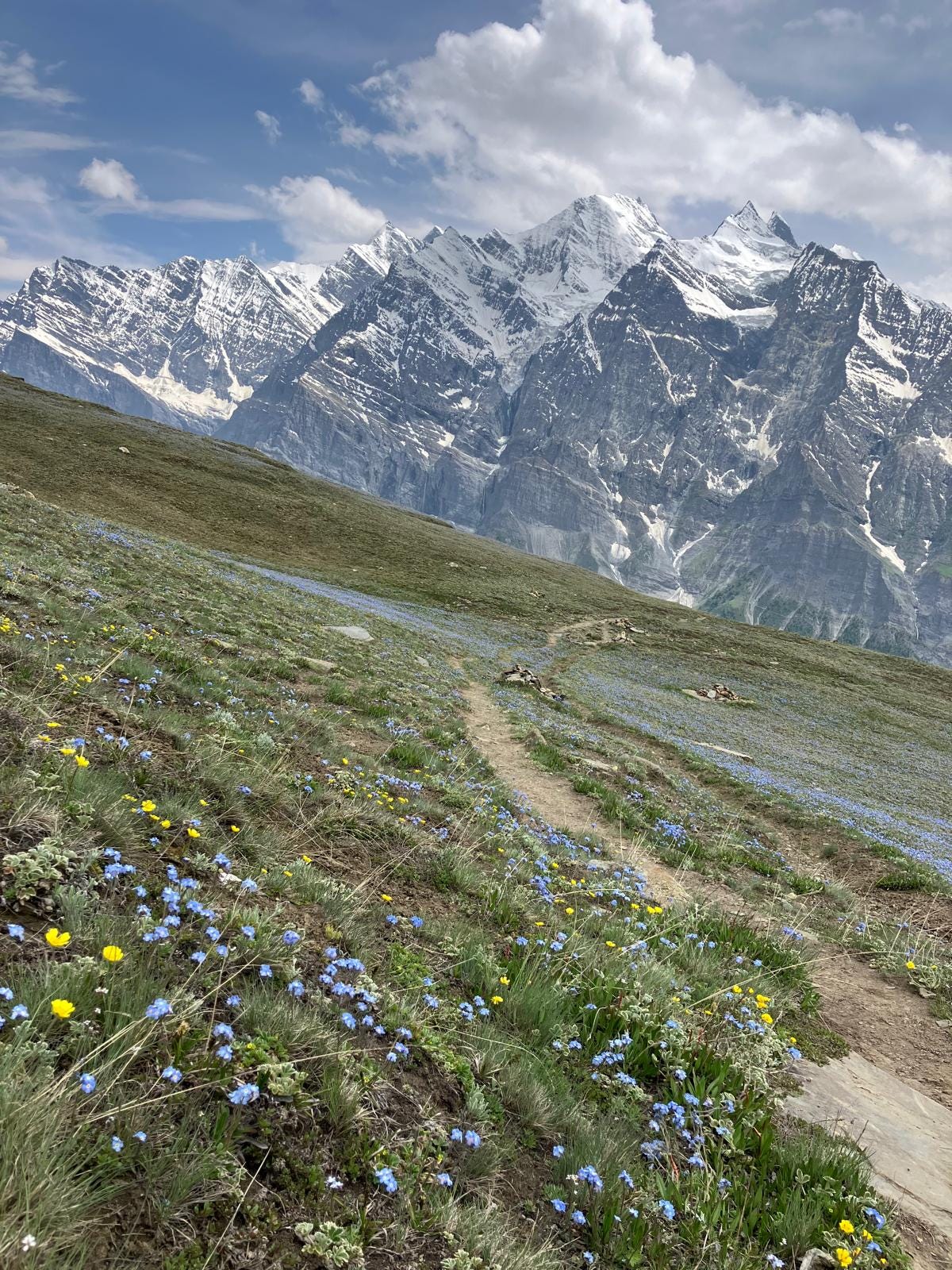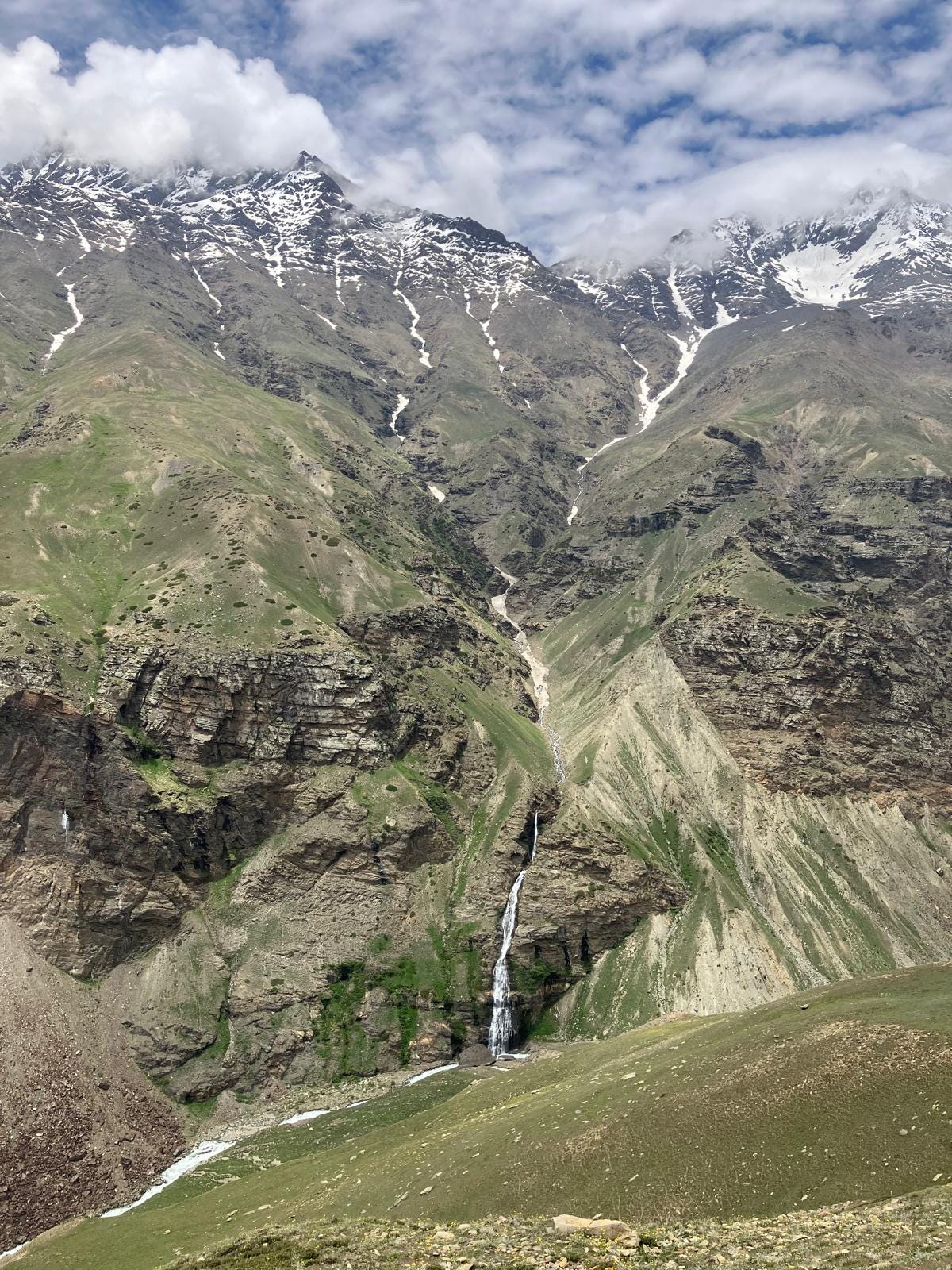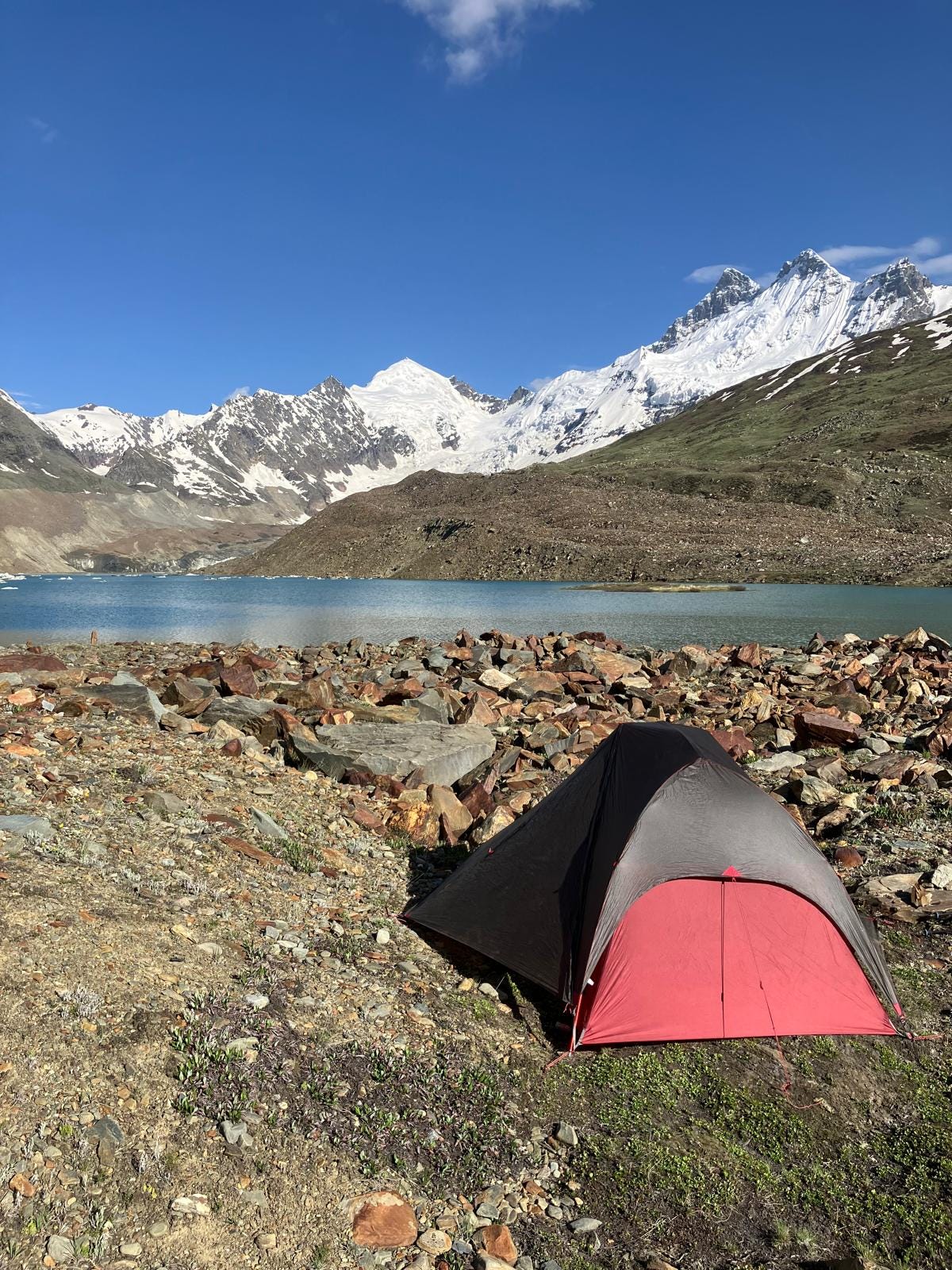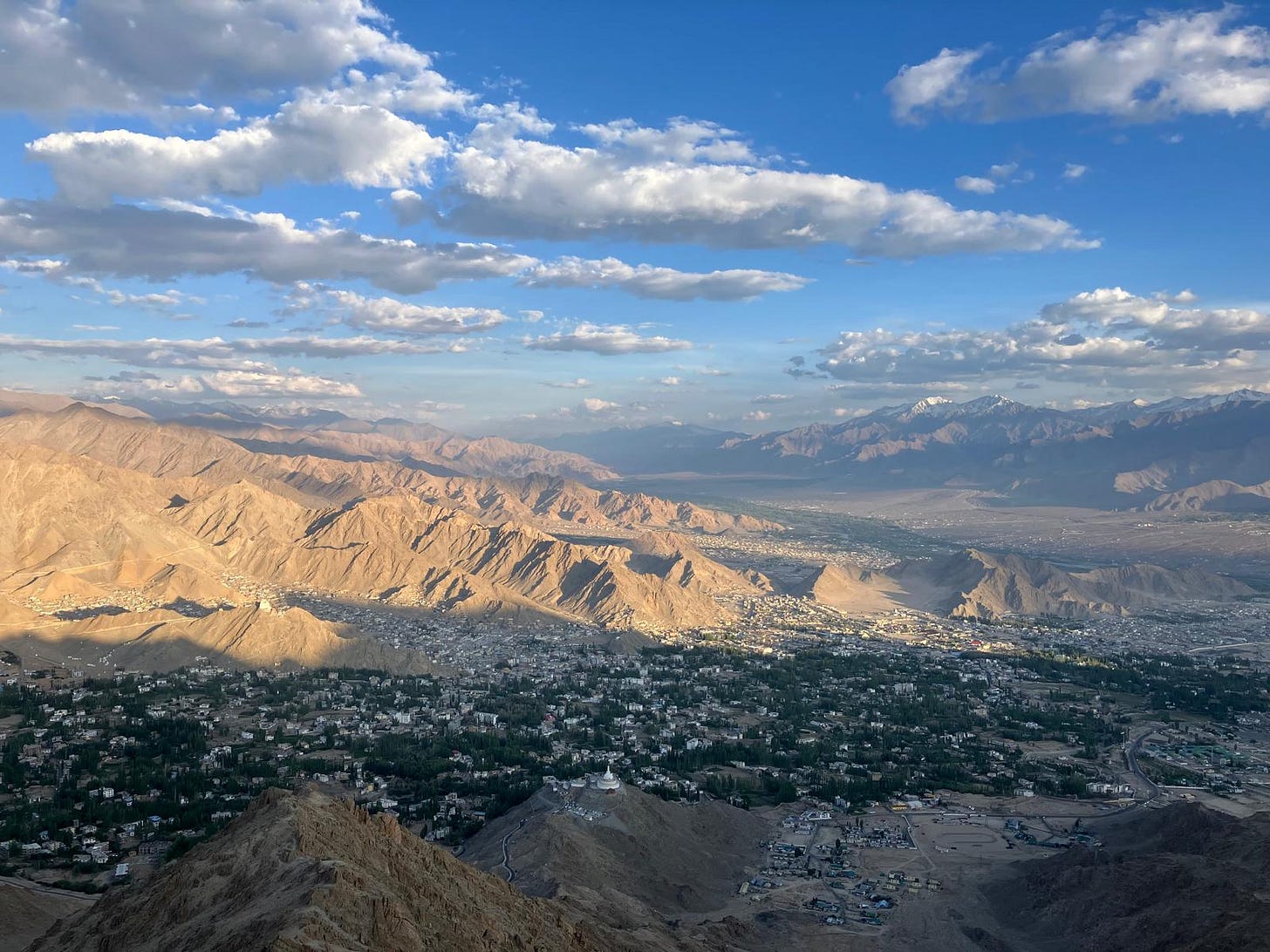On the last weekend in June, we took the 14 hour bus journey from Manali to Leh. This marked the end of my first three months in the Indian Himalayas, and the beginning of two months of serious, high-altitude hiking. My time in Himachal Pradesh has been decent preparation. Training is the combination of stress and recovery, and I've had plenty of both. From now on, recovery will be in short supply, but my hope is that I've banked enough fitness to carry me safely through what we have planned. It's hard to gain fitness at high altitude. Rather, it's a case of utilising what you already have.
Before leaving for Leh, I decided to spend a few days in Lahaul to get a little taste of the thin air to come, and to spend a few nights sleeping higher to ease the transition to Ladakh. I've been sleeping above 2000m now since the beginning of April, which is an ideal height for getting a cardiovascular adaption (it's a similar altitude to the endurance-training meccas of Sierra Nevada, Spain or Flagstaff, Arizona, for example). However, once you start getting well above 3000m, it's a different ball game. At sea level, the effective oxygen percentage of air is around 21%. At 3000m, this drops to 14.3%, and at 5000m, it's 11%. In other words, at 5000m each breath you take contains roughly half the oxygen it does at sea level. In these conditions, the body struggles to deliver oxygen to your tissues, and hiking up steep terrain becomes inordinately difficult. The only remedy to the effects of altitude is time. Acclimatisation is a slow and serious business. Do it sensibly, and the body will adapt to the lower oxygen levels by generating more red blood cells to efficiently transport the available oxygen. Ascend too fast, and the symptoms of acute mountain sickness can range from a mild headache and dizziness to the life-threatening conditions of HAPE and HACE.
My acclimatisation started by taking the bus from Manali to Keylong, a town a few hours to the north on the other side of the Pir Panjal range. I spent one night here at 3080m, before hiking over the Rangcha Gali (4400m), a pass which takes you to the town of Gondhla. It's a simple trail that leads you past the Kardang Gompa, a Tibetan Buddhist monastery perched on the hillside (Buddhism is said to have reached this part of the Himalayas in the 8th century), and over the prayer flag-strewn pass. On the descent, you're faced with the great rock walls of the Pir Panjals, and meadows filled with beautiful blue and yellow wild flowers.
After stopping at a roadside dhaba for a cold drink, I swiftly hitched a ride a few miles down the valley to Sissu, the base village for the hike to Ghepan Lake. I slept at Sissu (3120m) before starting early with a few aloo parathas packed from the local dhaba. Once you pass the small farming hamlets on the hillside, the trail follows an old water channel above the Sissu Nala, which traverses steep scree slopes and the odd snow-filled gully, where I had to carefully kick in steps to avoid a long slide down towards the river. It's a stunning trail, surrounded by snow-capped peaks and huge waterfalls on the opposite side of the nala.
After reaching another shepherd's camp, the trail plateaus before the last gentle climb to Ghepan, a huge glacial lake buried deep in the valley. I sat and watched chunks of ice floating serenely across the water, before pitching my tent on a small patch of grass at the lake's edge. I was just below 4100m now, the highest I've slept so far on this trip, and I had a predictably bad night's sleep (the effects of altitude are generally worse at night as your respiration rate naturally drops). As soon as there was enough sunlight, I packed up and retraced my steps back down the valley to Sissu, feeling better with each metre descended.
After returning to Vashisht, I only had a couple of days to pack up my room and say my goodbyes to the friends I've made there (shoutout to Hina, Kim, Samhita and Harsh!). I was sad to leave - it really had been an ideal base for the last couple of months, and I vowed to return in September if time allowed. All that was left to do was the long drive north, so early on a Sunday morning I lugged my bags down to the highway to meet Manav and a few other hikers heading to Ladakh, and loaded into a minibus. The Manali-Leh highway is a notoriously difficult road that crosses 4 passes above 4900m, and is prone to frequent landslides and other delays. Our journey however was pretty smooth, and between drifting off I watched the landscape change from the lush green of Kullu, to the snow capped mountains of Lahaul, into the barren high-altitude desert of Ladakh. It's a unique, mesmerising landscape, and in each valley Manav would excitedly point out various passes and potential trekking routes. We reached Leh after nightfall, and checked into a hostel where we'd have a week to rest, acclimatise (we were staying at 3600m), and make the final preparations.
So, what are we preparing for? I'm hesitant to share the plan in any detail, because as always in the mountains, it's subject to change at short notice. On paper, we have a route planned that should take around 4 weeks to complete, which explores a huge swathe of the Zanskar range, taking in 25 passes (most of which are over 5000m). The biggest question mark at the moment is the water levels in the streams and rivers. In July, the strong sun rapidly melts the snow on the high mountains, causing water levels to rise. It may be that we're turned around by an impassable river, but we've done our best to gather information from knowledgeable locals and plan accordingly. Regardless, it will be the longest and most ambitious mountain route I've ever attempted. Manav and I will hike the whole thing, with a couple of other friends joining us for different sections. We plan to cross a road or village every few days so we can resupply on food, but most of the time will be spent in remote valleys, with only the odd yak herder for company. So, dear reader, you won’t hear from me for a few weeks, but all being well I’ll be back in August to tell you all about it. Wish me luck.








Really enjoying your blog Pete good luck for your trek. Safe Journey
Enjoying reading your blog .Take care. M xx